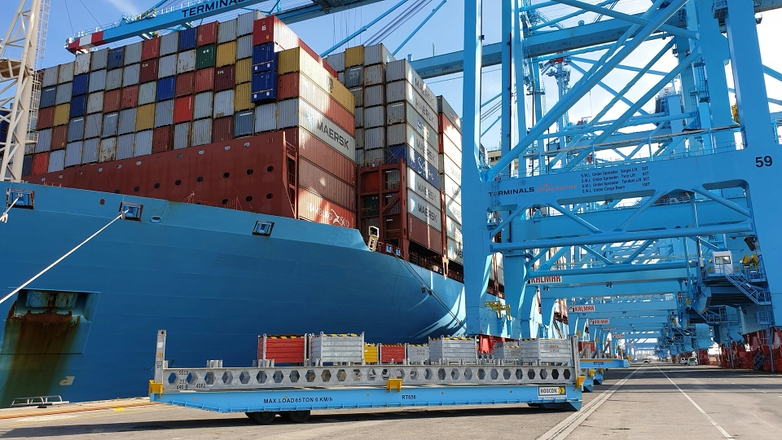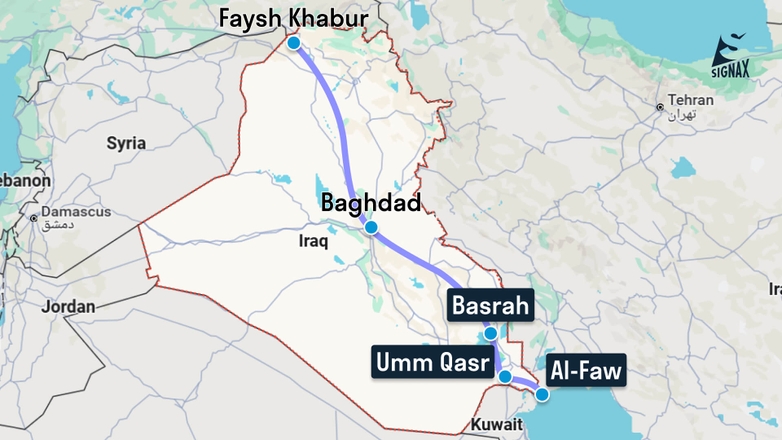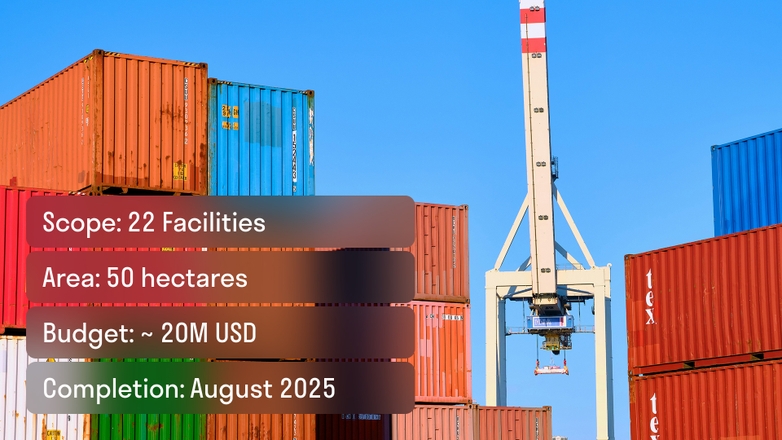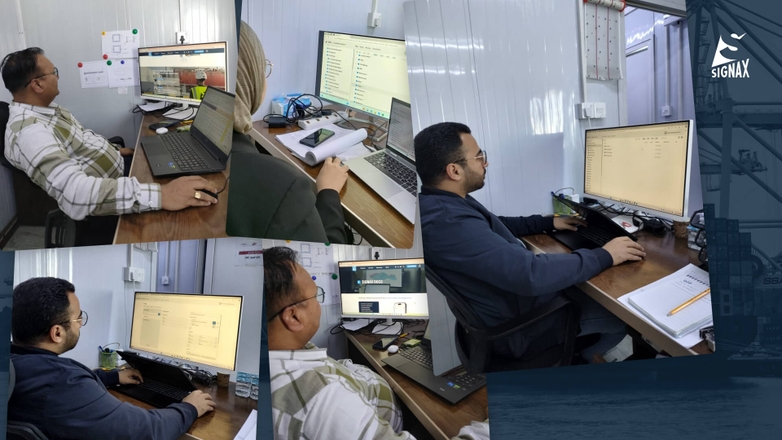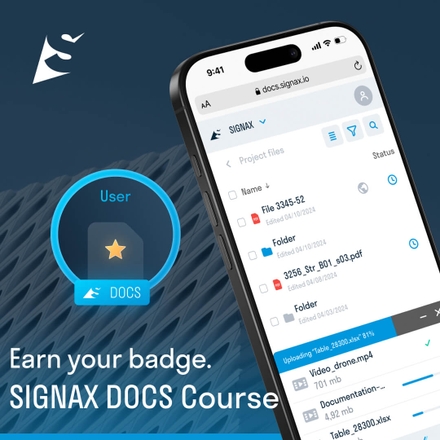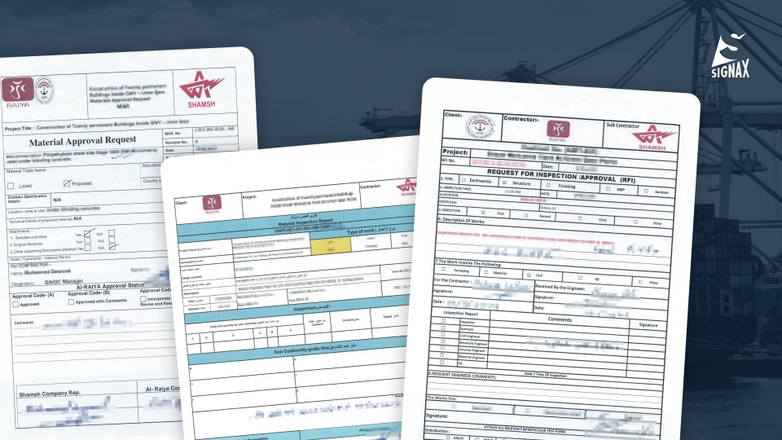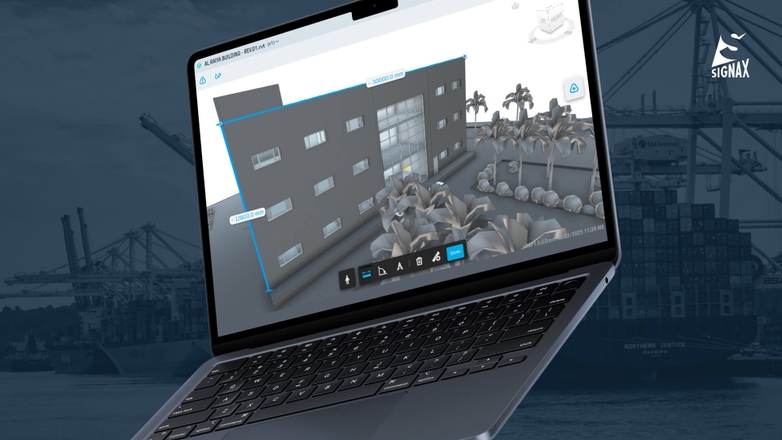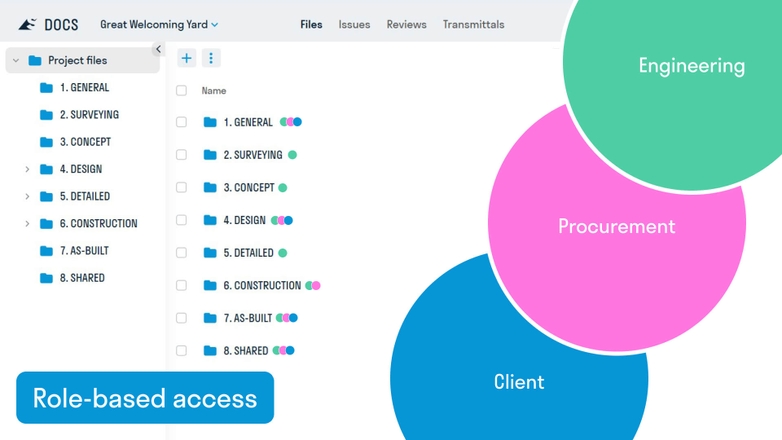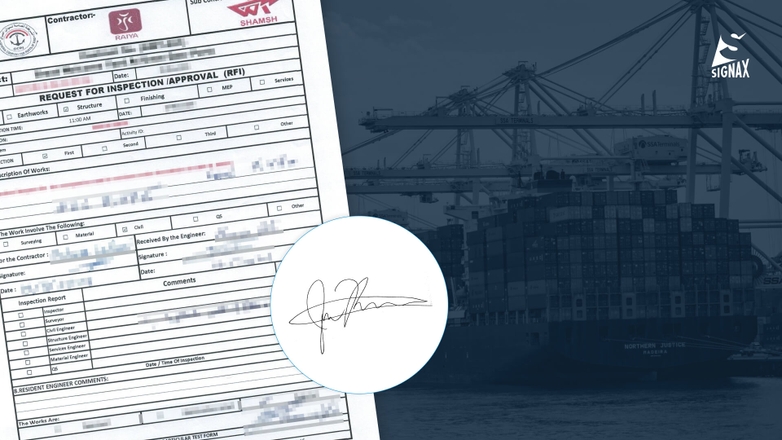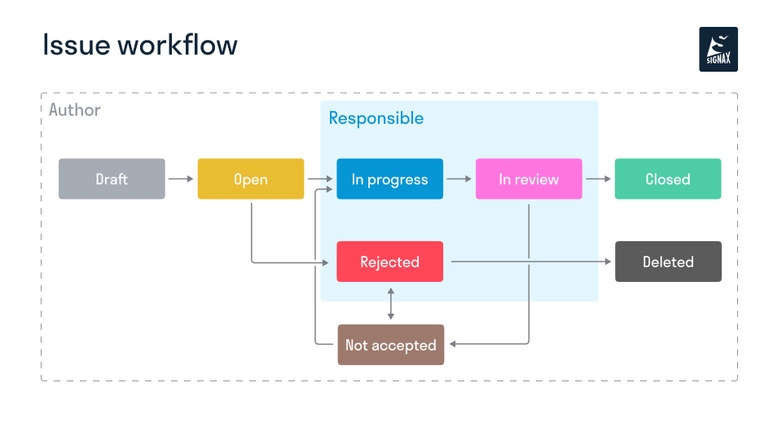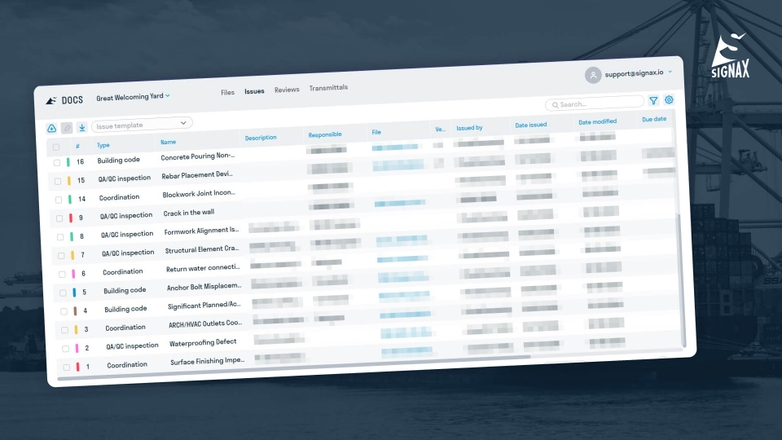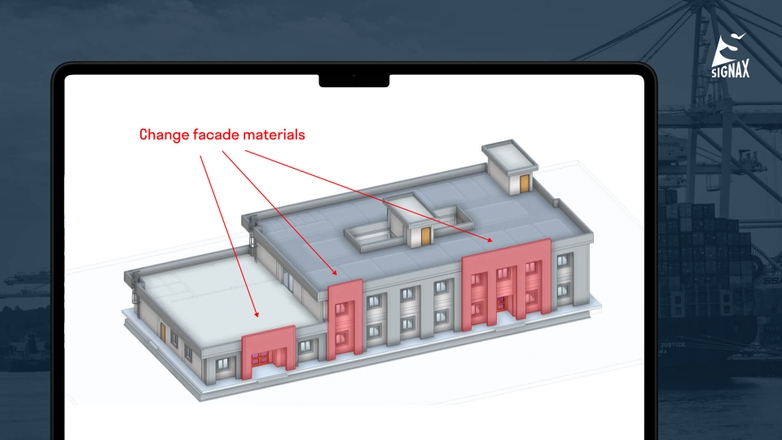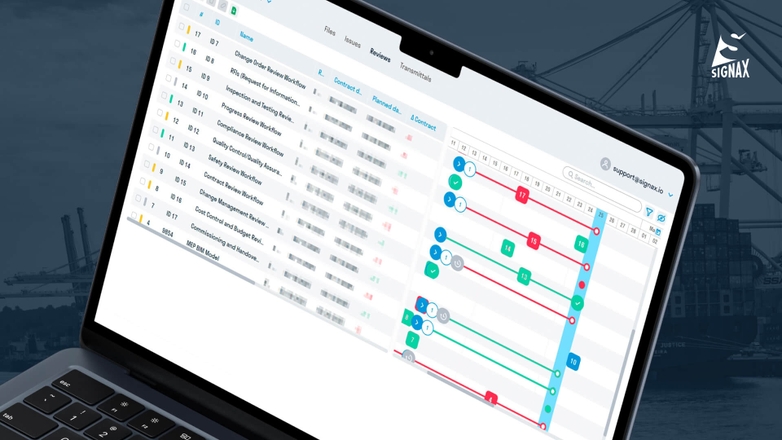Empowering Iraq’s Future: Shamsh Group’s Digital Transformation at Umm Qasr Port
Discover how Shamsh Group modernized Umm Qasr Port’s infrastructure with SIGNAX DOCS, achieving faster approvals, streamlined document management, and improved collaboration across Iraq’s key development project

Project overview
Umm Qasr Port, Iraq’s largest port by cargo volume and its only deep-water port, is being modernized to expand cargo capacity and operational efficiency. Located near Basra, the port serves as Iraq’s primary gateway for imports, handling 60% of the country’s cargo.
The project aligns with Iraq’s $17-billion «Development Road» initiative. It will link Grand Faw Port to Turkey and Europe and position Iraq as a key Middle East-West transit corridor.
The project is being spearheaded by AD Ports Group, a leading developer and regulator of ports and related infrastructure in the MENA region, in collaboration with Raiya Group, a prominent Iraqi construction company, as the investor. The first phase handover is scheduled for 2028. Shamsh Group has been entrusted with the construction of more than 20 new administrative and operational facilities, further strengthening the port’s infrastructure and functionality.
Preparation Phase
- Challenge
Implement a training program to train a dispersed team with varied schedules effectively.
Before the project kick-off, SIGNAX collaborated closely with Shamsh Group’s Project Lead, Thulfiqar Salhom, through structured workshops to align objectives, timelines, and resources. We identified and analyzed the needs, leading to the decision to implement DOCS CDE.
CDE (Common Data Environment) is a centralized platform for managing and sharing project information, ensuring real-time collaboration and compliance with standards like ISO 19650.
Implementing new software into a company’s business processes is a complex and labor-intensive task, which was the main challenge we successfully addressed.
A hybrid training program was deployed to ensure the seamless adoption of SIGNAX solutions, which included:
- Offline training sessions and workshops
- On-demand online course with certification
- Convenient wiki
- Role-based simulations for better further collaboration
- QA sessions and fast support
Within 30 days, all team members completed certified training, enabling a rapid transition to digital workflows. This phase established a foundation for standardized processes in document management, eliminating the challenges of mastering new software and improving cross-departmental collaboration.
- Impact
- Accelerated software rollout (<30 days) and workflow standardization.
- 100% team members got certified in SIGNAX DOCS.
Use cases and benefits
1. Centralized Document Storage & Version Control
- Challenge
Decentralized storage systems (SharePoint, Google Docs, paper files) cause version conflicts, collaboration bottlenecks, and inefficient access management.
One of the first significant improvements was organizing document storage. Before SIGNAX, project documents were scattered across various platforms: paper-based files, scans stored in SharePoint, and CAD/BIM models saved in SharePoint or Google Drive. This led to collaboration challenges and inefficiencies in version control. Finding the latest file versions was challenging and potentially led to costly mistakes.
After the training, Thulfiqar established a structured project folder system with custom role-based access. SIGNAX technical support, leveraging open API protocols, helped Shamsh Group migrate all project data.
The new system empowered all stakeholders, including Thulfiqar’s team at Shamsh Group, client representatives from AD Ports Group and Raiya Group, and subcontractors, with tailored access permissions. Each party had their unique permissions to view, edit, or comment on documents based on their role.
- Impact
- 43% reduction in time spent searching for documents.
- Eliminated versioning errors, ensuring all teams reference the latest CAD/BIM models and documentation.
2. Streamlined Collaboration with Digital Notes & Workflows
- Challenge
Paper-based markups and email/messenger communication delay decisions and create accountability gaps.
Clear and transparent communication is key to meeting project deadlines. Before SIGNAX, teams relied on emails and messaging apps to exchange feedback, making tracking issues, maintaining workflow consistency, or efficiently addressing file-specific notes nearly impossible. Making changes to drawings and documents on construction sites often meant excessive paperwork and wasted time.
SIGNAX DOCS transformed this process by digitizing collaboration. Shamsh Group’s document manager, Saeed Fares, set up custom templates for tracking issues directly within project files, managing access, and defining viewing/editing permissions. Additionally, previously, paper-based workflows were digitalized. Team members added notes and digital signatures and created Request for Inspection (RFI), Material Approval Requests (MAR), Material Inspection Requests (MIR), Non-Compliance Reports (NCR), and other documentation directly from mobile devices.
With automated notifications, responsible team members received instant email alerts when an issue is assigned. Then, they tracked, updated, and resolved tasks efficiently, significantly improving response times.
- Impact
- 27% faster resolution of site issues.
- 55% reduction in paper-based workflows.
3. Automated Approvals & Transparent Tracking
- Challenge
Manual approvals via email/WhatsApp cause delays, rework, and miscommunication.
Before SIGNAX, document approvals followed an outdated workflow: files were emailed or shared via WhatsApp, printed, signed, scanned, and sent back – a time-consuming and error-prone process.
By implementing SIGNAX DOCS, approvals were entirely digitized, drastically reducing turnaround times. Custom roles and workflows were set up, allowing documents to be reviewed and approved seamlessly within the system. Approved drawings were stamped with a QR code, preventing outdated versions from being used on-site.
The introduction of transmittal functionality further streamlined communication, enabling secure document handover to clients and generating signed Certificates of Delivery and Acceptance. The new approval workflow has even been extended beyond construction documents – financial documents for the Umm Qasr Port project were processed through SIGNAX DOCS as well.
A notable use case was the approval of advanced container handling equipment for port operations. The process involved multiple stakeholders, including the procurement and engineering teams, as well as multiple senior managers for final sign-off. Traditionally, this would have required sequential reviews, with each department waiting for the previous one to complete its assessment. With SIGNAX’s flexible approval workflows, the teams were able to configure a parallel review system. This allowed the procurement and engineering departments to conduct their evaluations simultaneously while notifications kept everyone updated in real time. Once both teams completed their reviews, the document was routed to the two senior managers for final approval.
- Impact
- Approval cycles cut by over 60%.
- No incidents of rework due to on-site QR code verification.
Conclusion
The partnership between SIGNAX and Shamsh Group at Umm Qasr Port marks a milestone in Iraq’s infrastructure modernization. By digitizing document storage and approval workflows, SIGNAX eliminated inefficiencies that once consumed 30% of the team’s time, allowing Shamsh Group to prioritize critical construction milestones.
Today, all users operate from a unified digital platform that serves as a single source of truth, ensuring accurate, up-to-date project information and fostering enhanced collaboration and decision-making across the organization.
With scalable workflows now fully integrated, Shamsh Group is well-positioned to spearhead Iraq’s next-generation construction projects and is on track to establish itself as a leading contractor in the region.
